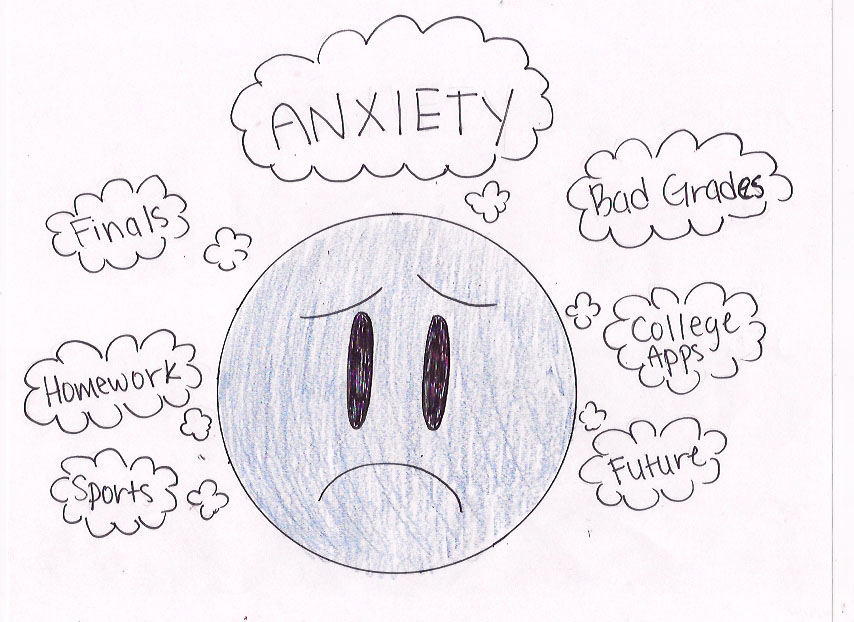Unsigned Editorial: Praise for New School Focus on Student Mental Health
October 19, 2018
In the United States, suicide is the second leading cause of death for teens. According to the National Institute of Mental Health, 6,159 people living in the United States ages 10-24 committed suicide in 2016 alone, a shocking seventy percent increase from 2006 (nih.gov). The New York Times acknowledged that anxiety, the most common mental illness in the United States, is quickly becoming lethally prevalent among today’s teens. They also credited anxiety with rising suicide rates in young people and doubling hospital visits for suicidal teenagers (nytimes.com).
Despite this staggering data, mental illness — whether it’s anxiety, depression, or anything else — is constantly met with negativity and ignorance. Often times, instead of trying to understand, people dehumanize and invalidate those with mental illnesses. CNN reported that 58 percent of people interviewed said the stigma and discrimination surrounding their mental illness was almost or as bad as the illness itself (cnn.com).
Many sources have disregarded data supporting these issues, others have recognized the issue but have chalked it up to this younger generation’s inability to grow, their lack of resilience, and issues embedded in the use of technology and social media. While some of these may contribute to teen anxiety, Psychology Today labeled fear of failure, unrealistic expectations of oneself, academic and athletic pressures, and overbearing, over-involved parents as some of the main causes of mental illness in today’s youth (psychologytoday.com).
Despite statistics showing the effects of mental illness and clear analysis of the problem, little is being done to remedy it. Clearly, there is enough evidence and medical research to help teens, but very few adults and professionals are taking a strong stance against this issue. Limited media coverage and lack of public awareness are only perpetuating it. Something needs to be done.
UC High is not exempt from this national crisis. Looking at the Healthy Kids Survey, Principal Jeff Olivero found that in 2015, twenty-three percent of ninth-grade students and twenty-nine percent of eleventh-grade students reported feelings of chronic sadness and helpless feelings. Of students surveyed, thirteen percent of ninth graders and fourteen percent of eleventh graders were seriously considering suicide. Last school year, the numbers jumped to thirty-two and thirty-five percent for ninth and eleventh-graders on the topic of chronic sadness or helplessness and sixteen percent and thirteen percent for those considering suicide.
The survey covered a variety of topics, but of all of them, the high numbers regarding mental illness stood out to Olivero. He knew he had to do something. So, he created what he called the “2018-2019 Strategic Plan,” a plan that will allow him to spend some time and resources figuring out how to help reduce the struggles and stresses students face with regards to mental and emotional health. Thus far, he has added another counselor and is encouraging the McAlistair program, which is a rehabilitation program for teens struggling with alcohol and drug use, within the school. He is also corresponding with a group called Mending Matters, who will assign a therapist to the school that will counsel students and create support groups for troubled teens on campus on a weekly basis.
Over the course of this year, and in the years to come Olivero hopes to see the number of kids with anxiety and suicidal thoughts cut in half. “Obviously we would like to get the numbers to zero, but I think we have the hard data to see what we need to do at this point,” stated Olivero. “We just want kids to learn how to ask for help and respond to these challenges in a healthy way, and be able to deal with them in the future so they can take on life,” he continued.
We, the editorial board of the Commander, commend Mr. O for realizing this issue exists and for taking charge of a plan to address it. More often than not, tough issues like anxiety and depression are all too easily brushed under the rug. So many people disregard the mental health epidemic sweeping over young people, but luckily, our principal doesn’t.


